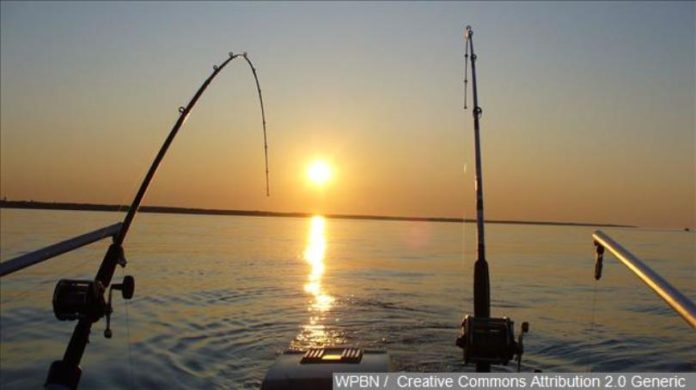Anglers this spring and summer can expect to begin catching legal-size walleyes in Shriner Lake, northeast Indiana’s newest walleye lake, located north of Columbia City in Whitley County.
To be legal size, walleyes must be 16 inches or longer.
In 2016 the DNR stocked 1,200 walleye fingerlings in the 120-acre natural lake to increase walleye fishing opportunities in the area.
When stocked, the walleyes were 6 to 8 inches long.
Last fall DNR biologists captured 67 walleyes at the lake during two laps around the shoreline with an electro-shocking boat.
Although most of them averaged 13 inches long, several walleyes measured 15 inches.
“They are growing fast. We expect quite a few will be 16 inches and bigger this year,” said Jed Pearson, DNR fisheries biologist.
The DNR stocked another 1,200 walleyes in the lake last fall, so anglers are likely to also catch several walleyes below the size limit.
“That’s OK. Just release the small ones. They will be fine,” Pearson said.
Based on the sampling results, Pearson says walleyes stocked in Shriner Lake are surviving as well as or even better than walleyes stocked in other Indiana lakes.
“We caught 20 walleyes per hour of shocking,” Pearson said. “That’s more than double the statewide catch rate and similar to the rate at some other walleye lakes in northeast Indiana.”
Multiple fingerling stockings at Crooked Lake in Steuben County have produced an average catch rate of 17 walleyes per hour.
Catches at Sylvan Lake in Noble County averaged 25 per hour, while catches at Winona Lake in Kosciusko County averaged 13 per hour.
“We’ll go back to Shriner this fall to see how the most recent stocking went,” Pearson said. “Eventually we’ll survey anglers to see how many of them fish for walleyes and how many they catch. The results will then help us decide whether to continue the stocking program.”
Pearson said the walleyes in Shriner Lake were scattered around the shoreline near areas where the bottom drops off.
As the summer approaches, he expects many of the walleyes will move into deeper water where temperatures are cooler.





